Shooting RAW on your smartphone reveals a wealth of photographic potential. You'll capture enhanced dynamic range, preserving more details in highlights and shadows. Enjoy greater color depth for vibrant, true-to-life images. You'll have improved white balance control, allowing for easy color cast corrections. Flexible post-processing options let you fine-tune exposure and color without quality loss. You can recover blown-out highlights, salvaging seemingly lost details. Experience better low-light performance with reduced noise and improved detail retention. Finally, you'll future-proof your images, ensuring they remain adaptable to evolving editing technologies. Discover how these benefits can elevate your smartphone photography to new heights.
Enhanced Dynamic Range
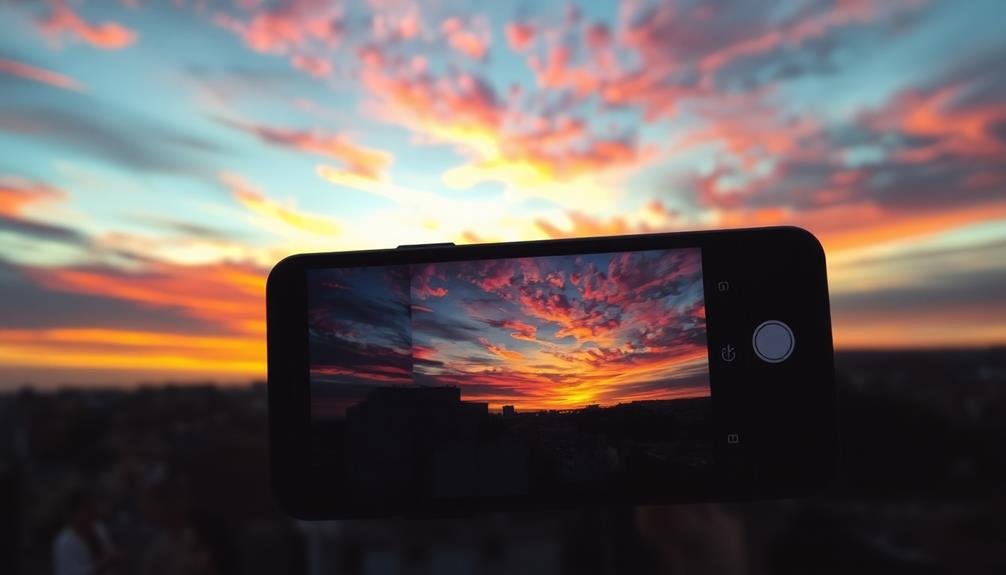
Capturing RAW images on your smartphone opens up a world of enhanced dynamic range. When you shoot in RAW, you're preserving a wider range of tones and colors than what's possible with standard JPEG files. This means you'll have more flexibility to recover details in both the brightest highlights and darkest shadows of your images during post-processing.
In high-contrast scenes, like sunsets or interior shots with bright windows, RAW files allow you to pull back overexposed areas and bring out hidden details in shadows. You'll be able to create more balanced and natural-looking images, even in challenging lighting conditions.
RAW files contain up to 14 bits of data per color channel, compared to JPEG's 8 bits. This increased bit depth translates to smoother tonal gradations and more accurate color representation.
You'll notice fewer banding issues in areas like clear blue skies or subtle color shifts.
Greater Color Depth
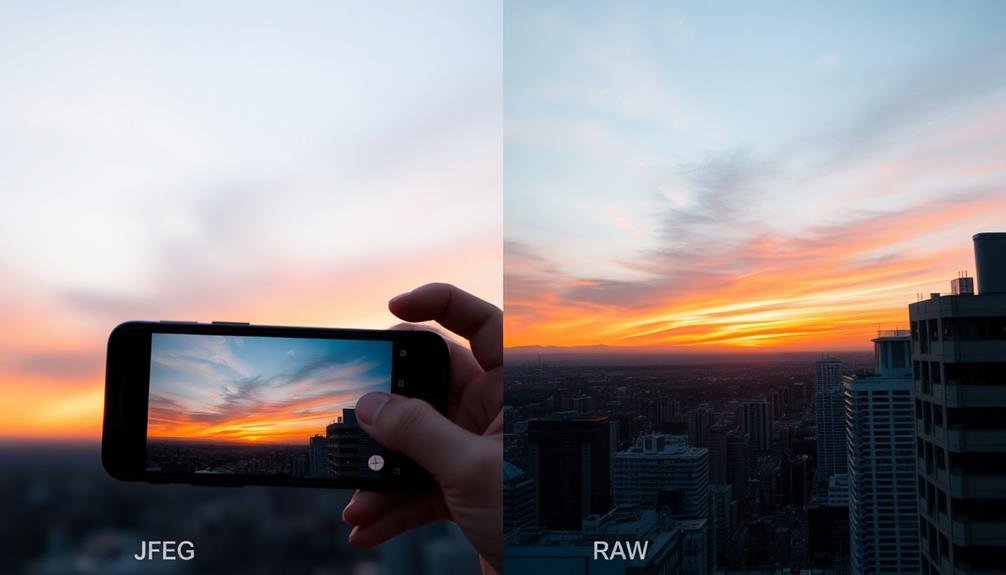
RAW images capture greater color depth, allowing you to achieve enhanced color accuracy in your smartphone photos.
You'll have access to a wider color gamut, which means more shades and tones to work with during editing.
This expanded range of colors enables you to produce more vibrant and true-to-life images, especially in scenes with subtle color variations.
Enhanced Color Accuracy
Colors come alive when you shoot in RAW format on your smartphone. RAW files capture a wider range of colors than compressed formats like JPEG, resulting in enhanced color accuracy. This means you'll see more nuanced shades and smoother color gradations in your images.
When you shoot in RAW, you're preserving the full color information recorded by your smartphone's sensor. This allows for more precise color adjustments during post-processing without degrading image quality. You'll have greater control over white balance, saturation, and hue, enabling you to achieve more natural-looking colors or create stylized effects.
RAW files also retain more information in highlight and shadow areas, preventing color clipping and loss of detail. This is particularly useful in high-contrast scenes where you want to recover details in bright skies or dark shadows without compromising color accuracy.
Wider Color Gamut
Depth is the key to revealing a richer visual experience when shooting RAW on your smartphone. When you capture images in RAW format, you're accessing a wider color gamut that allows for greater color depth and more nuanced tones.
This means you'll have access to a broader range of colors and shades, giving you more flexibility in post-processing and ultimately resulting in more vibrant, true-to-life images.
Unlike JPEG files, which are limited to 8 bits per color channel, RAW files typically offer 12 or 14 bits per channel. This exponential increase in color information translates to smoother gradients, more accurate color reproduction, and the ability to recover details in both highlights and shadows.
Here's why a wider color gamut matters:
- More accurate representation of real-world colors
- Smoother shifts between color tones
- Ability to capture and reproduce subtle color variations
- Greater flexibility in adjusting white balance and exposure
Improved White Balance Control
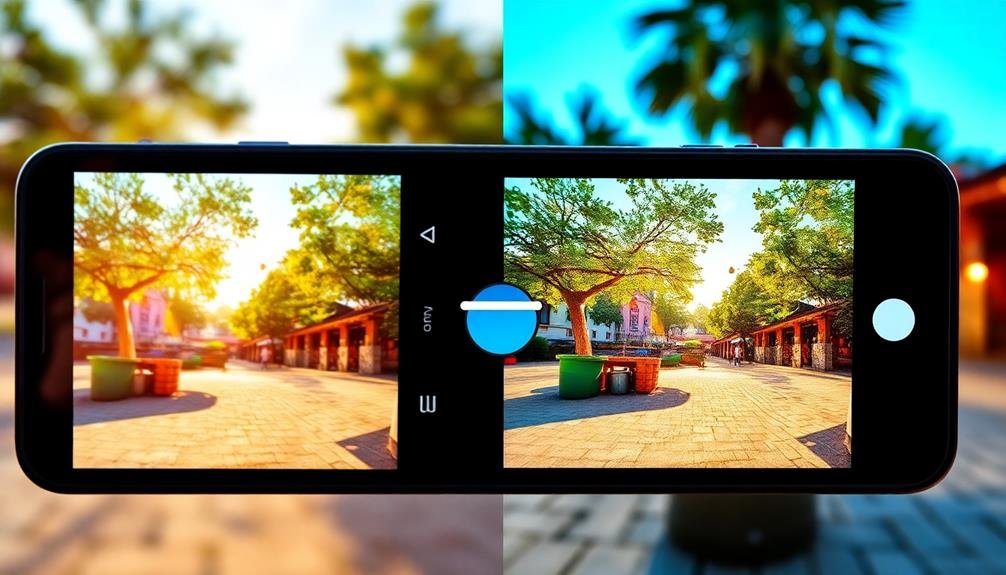
Precision is key when it comes to capturing accurate colors in your smartphone photography. When you shoot RAW, you'll have markedly improved white balance control compared to shooting in JPEG. This means you can adjust the color temperature and tint of your images with greater flexibility during post-processing.
With RAW files, you're not locked into the white balance settings chosen by your smartphone's camera at the time of capture. You can easily correct any color casts or adjust the overall mood of your image without degrading the quality. This is particularly useful in challenging lighting situations, such as mixed lighting or scenes with strong color tints.
You'll have the power to fine-tune your images' white balance using professional editing software, allowing you to achieve more natural-looking skin tones, correct for artificial lighting, or create specific atmospheric effects. This level of control isn't possible with JPEGs, as the white balance is "baked in" during the in-camera processing.
Flexible Post-Processing Options
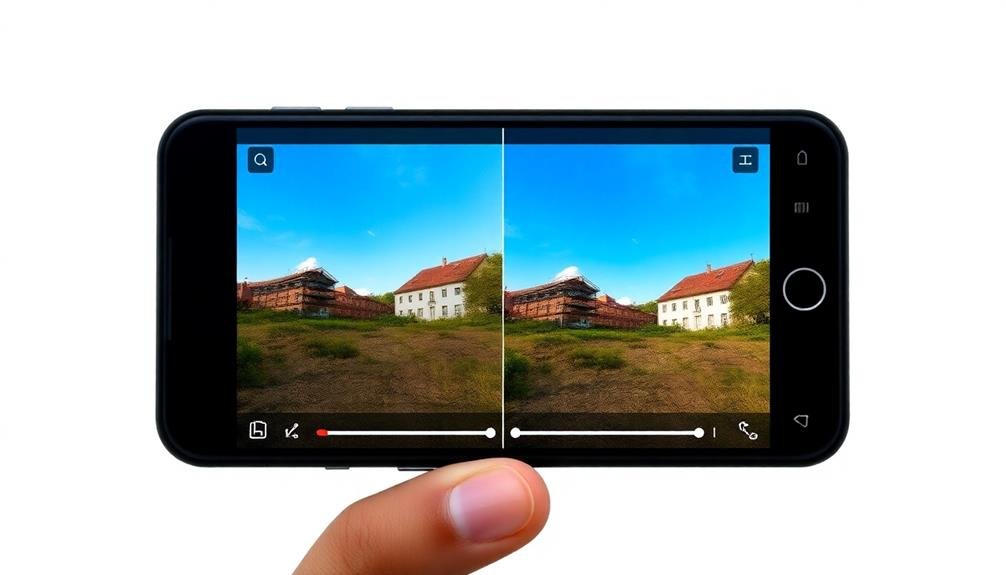
RAW files offer you unprecedented control over exposure and color adjustments in post-processing.
You'll be able to recover details from shadows and highlights, fine-tune white balance, and adjust contrast with minimal quality loss.
Additionally, RAW files allow for more advanced noise reduction techniques, helping you achieve cleaner images in low-light situations.
Exposure and Color Adjustments
One of the most significant advantages of shooting in RAW format on your smartphone is the flexibility it offers in post-processing. When you capture images in RAW, you'll have much more control over exposure and color adjustments during editing.
Unlike JPEG files, which have already been processed and compressed by your phone's software, RAW files contain all the data captured by your camera sensor. This wealth of information allows you to make extensive adjustments without compromising image quality.
You can easily correct exposure issues, recover details in highlights and shadows, and fine-tune colors to achieve your desired look. Here's what you can do with RAW files:
- Adjust white balance without introducing color artifacts
- Recover details from overexposed or underexposed areas
- Fine-tune color saturation and hue for each individual color channel
- Apply noise reduction more effectively
Advanced Noise Reduction
Building on the flexibility of RAW files, advanced noise reduction techniques become a powerful tool in your post-processing arsenal. When you shoot RAW on your smartphone, you'll have access to more sophisticated noise reduction algorithms that can dramatically improve image quality, especially in low-light situations.
Unlike JPEG files, which apply noise reduction at capture, RAW files allow you to fine-tune noise reduction during post-processing. You can target specific areas of the image, adjusting luminance and color noise separately. This precision guarantees you maintain detail in important areas while smoothing out unwanted graininess in others.
Modern noise reduction software can intelligently analyze your RAW file's data, preserving edge detail and texture while eliminating digital artifacts. You'll be able to push your smartphone's ISO capabilities further, knowing you can clean up noise effectively later.
Additionally, RAW files give you the option to apply noise reduction selectively. You can use masks or brushes to apply different levels of noise reduction to various parts of your image, guaranteeing a natural-looking result that doesn't compromise overall sharpness or detail.
Recover Blown-Out Highlights
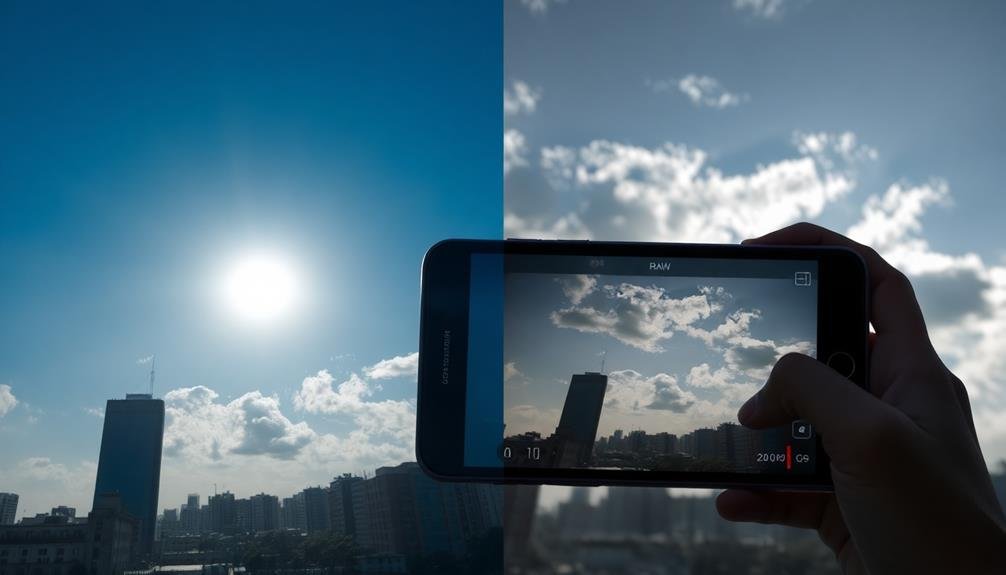
Smartphone photography's biggest challenge often lies in handling high-contrast scenes. When you're shooting in bright conditions, it's easy to end up with overexposed areas that appear as pure white, losing all detail.
This is where RAW files come to the rescue. Unlike JPEGs, RAW files retain much more information in the highlights, giving you a fighting chance to recover those seemingly lost details.
When you shoot RAW, you'll have considerably more latitude to adjust exposure in post-processing. Here's what you can do:
- Use the highlight recovery slider in your editing app to bring back lost details
- Reduce overall exposure to reveal hidden information in bright areas
- Apply local adjustments to specific overexposed regions
- Blend multiple exposures for even greater dynamic range
Better Low-Light Performance
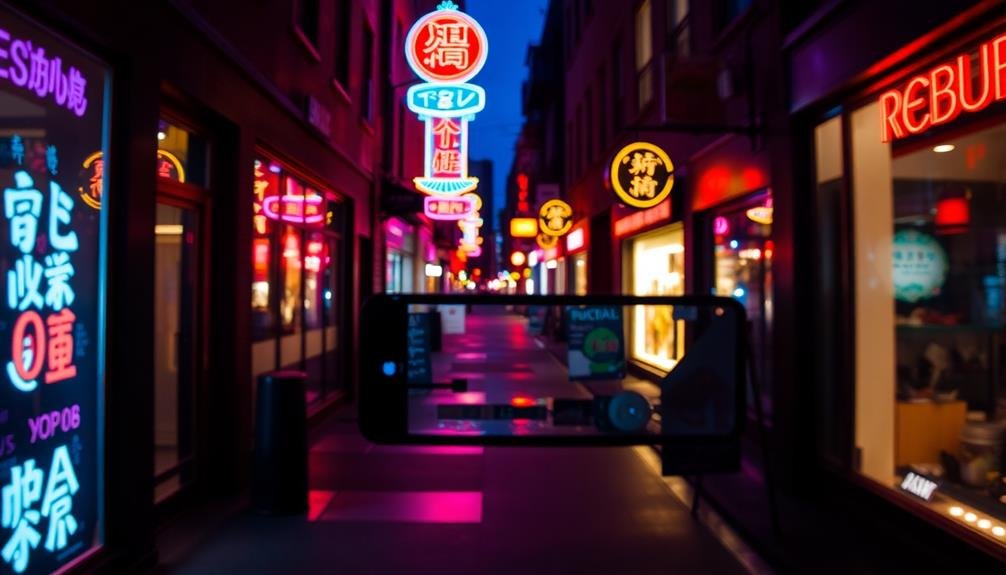
While smartphones have made significant strides in low-light photography, RAW files can take your night shots to the next level. When you shoot in RAW, you'll capture more data in dark areas, allowing for better noise reduction and detail recovery during post-processing.
In low-light situations, JPEG compression can exacerbate noise and lose subtle color information. RAW files retain all the data your sensor captures, giving you more flexibility to clean up noise without sacrificing image quality.
You'll be able to push exposure, recover shadows, and adjust color temperature more effectively, resulting in cleaner, more vibrant night photos.
RAW also preserves a wider dynamic range, which is essential in challenging lighting conditions. You can bring out details in both the darkest shadows and brightest highlights, creating more balanced and atmospheric night scenes.
This is especially useful for cityscapes, astrophotography, or any situation with high contrast between light and dark areas.
Future-Proof Your Images
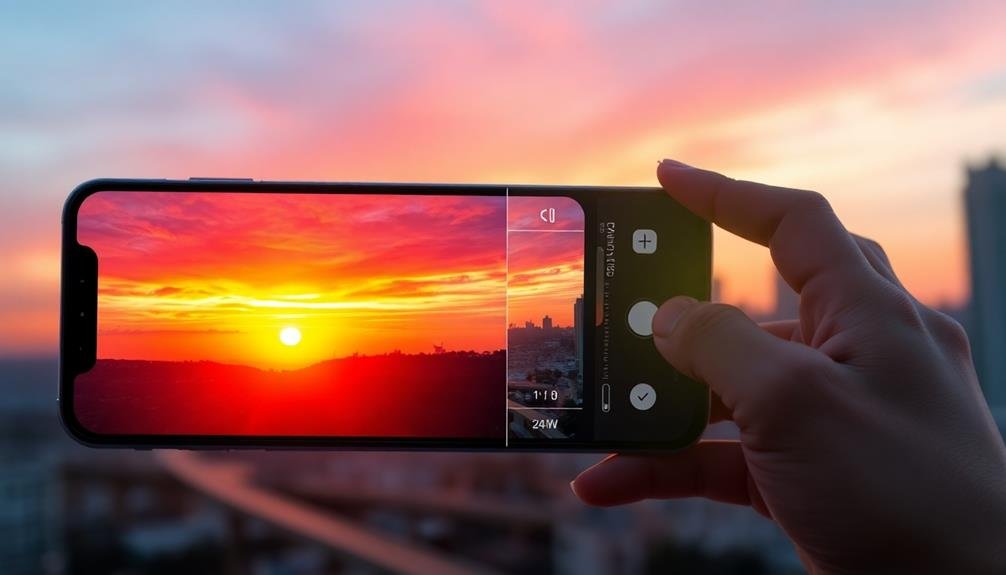
Time is the ultimate test for digital images, and RAW files offer a safeguard against future obsolescence. When you shoot RAW, you're preserving all the original data captured by your smartphone's sensor. This means you'll have more flexibility to edit and enhance your images as technology advances and your skills improve.
Unlike JPEG files, which discard data during compression, RAW files retain every bit of information. This future-proofs your photos, allowing you to take advantage of new editing techniques and software that may not even exist yet.
You'll be able to revisit old photos and apply the latest processing algorithms, potentially breathing new life into images you thought couldn't be improved.
Here's why RAW files are essential for future-proofing:
- Preserve maximum detail for future editing
- Adapt to new color spaces and display technologies
- Take advantage of improved noise reduction techniques
- Apply advanced AI-powered enhancements as they become available
Frequently Asked Questions
What Is RAW Format, and How Does It Differ From JPEG?
RAW is an uncompressed image format that captures all data from your camera's sensor. Unlike JPEG, which compresses and processes the image, RAW files give you more control over editing, allowing you to adjust exposure, color, and detail later.
Do All Smartphone Cameras Support RAW Shooting?
Not all smartphone cameras support RAW shooting. You'll find this feature mainly on high-end devices. Check your phone's camera settings or specs to see if it's available. If it's not there, you're limited to JPEG.
How Much Storage Space Do RAW Files Typically Require?
RAW files typically require considerably more storage space than JPEGs. You'll find they're about 3-5 times larger. For example, a 12MP JPEG might be 3-4MB, while a RAW file could be 15-20MB or more.
Can I Share RAW Files Directly on Social Media Platforms?
You can't typically share RAW files directly on social media platforms. They're usually too large and not supported. You'll need to convert them to JPEG or another compatible format before posting on most social media sites.
What Software Do I Need to Edit RAW Files From My Smartphone?
You'll need RAW-compatible editing software for your smartphone. Popular options include Lightroom Mobile, Snapseed, and VSCO. These apps let you adjust exposure, color, and other aspects of your RAW files directly on your device.
In Summary
You've now seen the compelling reasons to shoot raw on your smartphone. By embracing this format, you'll open up a world of creative possibilities and image quality improvements. Don't let your phone's default settings limit your photography. Start capturing raw images today and you'll enjoy greater control, flexibility, and the ability to produce stunning results. Remember, it's not just about taking pictures; it's about preserving memories in the highest quality possible for years to come.

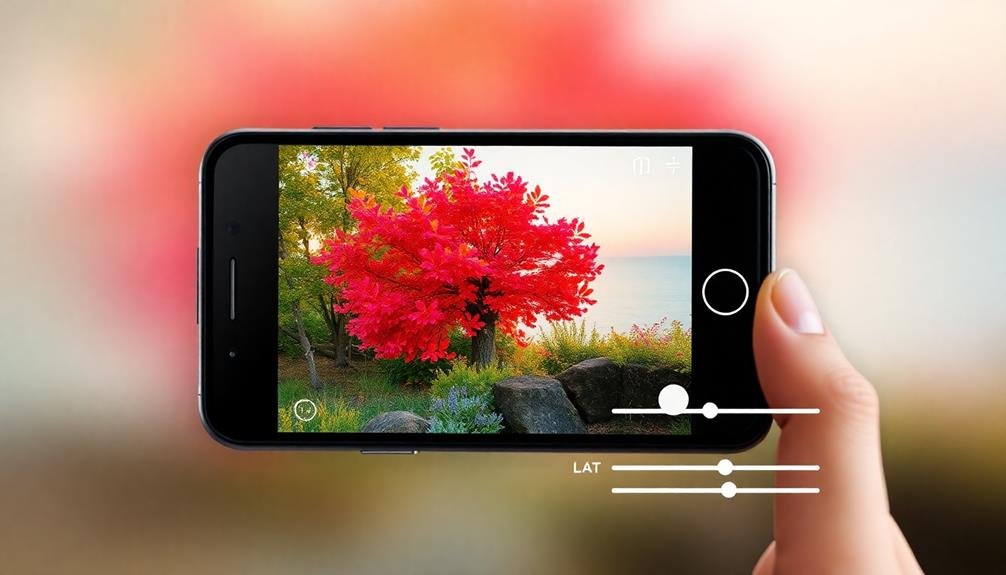



Leave a Reply